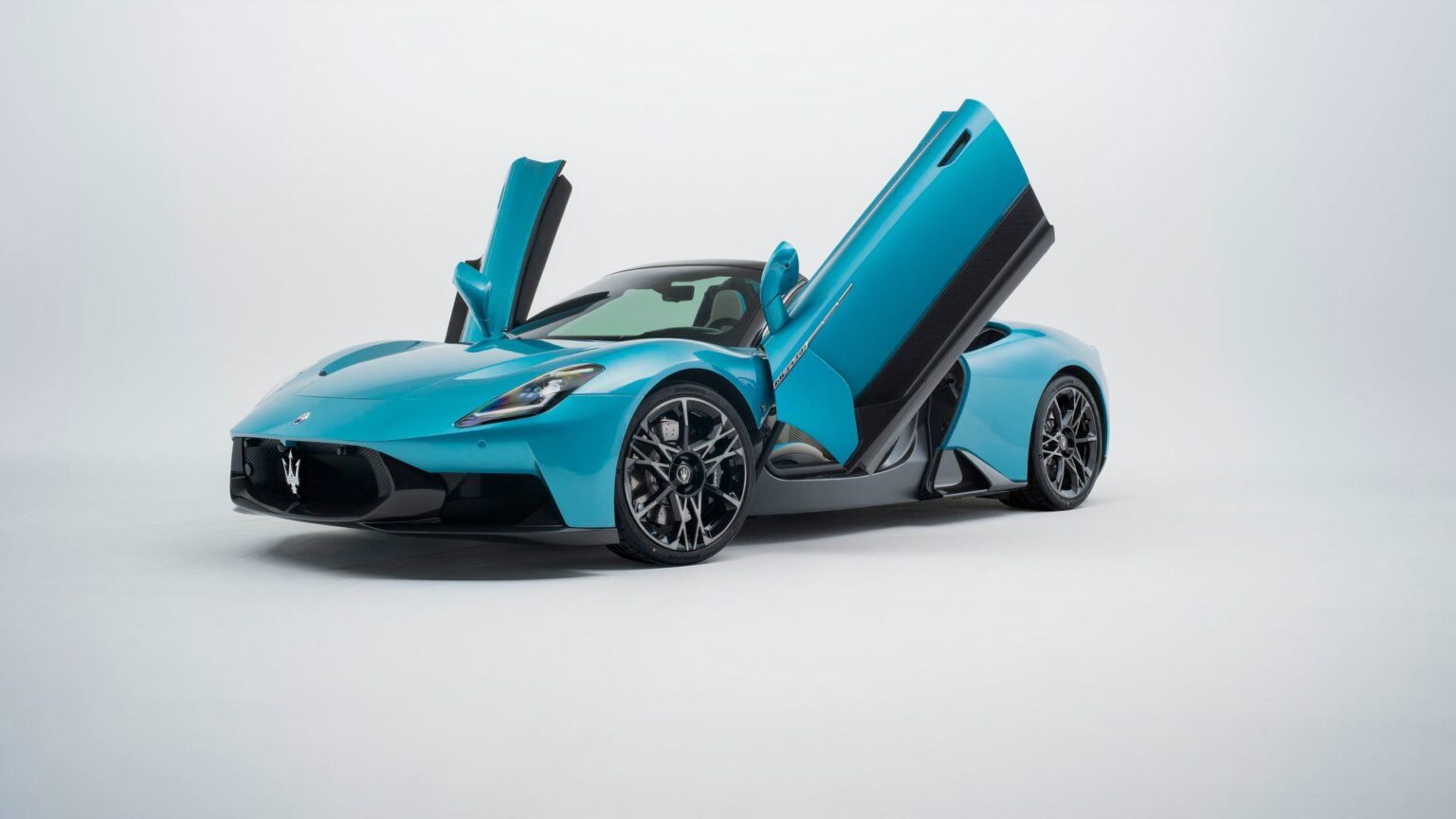The Maserati MC20 has been in the carmaker’s lineup since 2020. It is, at heart, a $250,000 V-6 supercar sold in limited numbers that’s very closely linked to the company’s GT-series racing cars. At this point, that original, 621-horsepower, closed-coupe, mid-engine MC20 has spawned an open-top MC20 Cielo, which is a convertible. Also, the MCXtrema, a track-only, 730-horsepower, ultra-lightweight version. And then from there, Maserati produced a slightly tuned-down version of that same racer, the GT2 Stradale, with 640 horsepower. What they all have in common is the same MC20 carbon-fiber monocoque chassis.
But this new car, the MCPura, will change the formula—a bit. FYI: “Pura” means “pure” in Italian, and this new version of the MC20 is a cosmetic facelift for the car. Here’s some of what Maserati shared with us about what they’re doing and why.
Italian “Reset”
It’s been five years since Maserati debuted the MC20. I’ll tell you, since I’ve driven one, that Maserati didn’t need to update the mechanicals. Why? Because the MC20 can chase down 60 miles per hour in under three seconds on the track, but be totally civilized in town. That’s exceptionally hard to get right. Usually, supercars are painful to drive because they’re too stiff. Maserati dials in the “gran-turismo” equation, understanding that beating the driver to a pulp is monotonous, not thrilling. They do that, with an adaptive suspension that can go from a default GT setting, which is all-day comfy, but still sporty, to Corsa, where the stability control nannies turn off—and you’d better know the next turn on the track. Also, in Corsa, the car’s exhaust note is as glorious as any car in F1, and just as bombastic.
But with the MCPura, what changes are the visuals, mostly. Klaus Busse, Maserati’s head of design, said the MCPura is pulling cues from the two more radical cars that came after the MC20, the MCXtrema and the GT2 Stradale.
“Sculptural Calm”
Busse calls the new shape “calmer,” and that’s subtle, but viewable, above. The car on the left is the outgoing MC20, with the MCPura on the right. Busse identified the more upright vibe of the MCPura, which is most pronounced at the front fender. Additionally, you can see the sculptural parts, where both the front and rear fenders are more exaggerated. Busse’s team also eliminated some creasing in the bodywork, and yet Busse said this wasn’t about the visuals. It was actually about making the car faster, and all of that was learned from their racing division’s track time with the MCXtrema.
“Every line, every element, serves aerodynamic efficiency. It’s cooling and performance wrapped in elegant restraint.”
—Klause Busse, Maserati Head of Design
Flat Or Shiny
Maserati is offering this car, at first, in both matte and gloss finishes. This color is called AI Aqua, and Busse explains that it “flops” between green and blue, depending on the light. The two finishes will get a rainbow effect, but Busse says that the matte finish in the coupe makes its lines look more aggressive. He says the glossy AI Aqua on the Cielo is “more emotional.” Interestingly, another stock color for MCPura is called “Devil Orange,” which Busse called “bold, electrifying, and unapologetic.” Given what we’re seeing in the pantheon of colors available to the super-rich, we’re not expecting apologies.
Same, Same
If you were expecting Maserati to announce a new powertrain, you’d be dissatisfied. They also said nothing about electrifying the MC lineup—an idea that was recently shelved by the Modenese brand.
Likewise, despite changing a bit visually, the car is almost exactly the same size, and the engine is still a 3.0-liter V-6 with a pretty astonishing 621 horsepower and 538 foot-pounds of torque. It’s all still mated to an eight-speed paddle-shift, dual-clutch, and if it works the same as it does in the outgoing MC20, then I’ll vouch for all that being plenty great.
Maserati did update the cabin, however. They’ve switched to the use of synthetic leather Alcántara, mostly because it’s both lighter than leather and offers superior grip. It sheds moisture better, and holds the driver in the seat. Also, they’ve added a new Alcántara steering wheel, one developed in racing the GT2 Stradale. This gets a flat top, which racers prefer for better gauge visibility and sharper corners at the top edges, for quicker input.
TopSpeed’s Take
Maserati is in a world of pain right now. They lost hundreds of millions of dollars last year, had to axe their electrification game plan, and it cannot help that the U.S. is one of their biggest markets, and tariffs are going to take their bite there as well. Stellantis, their parent company, isn’t doing awesomely, either, despite owning both Jeep and Ram. We’d love to see the Trident survive because car nerds like variety, and Maserati is the “forefather” of later exotics, Lamborghini, and Ferrari. And for the same reason we want Alfa Romeo and Fiat to survive, we want to live in a world where Maserati makes cars, too. Additionally, a car like the MCPura showcases ambition and beauty in equal measure, demonstrating that supercars can be about grace, not just brawn.
Read the full article here


